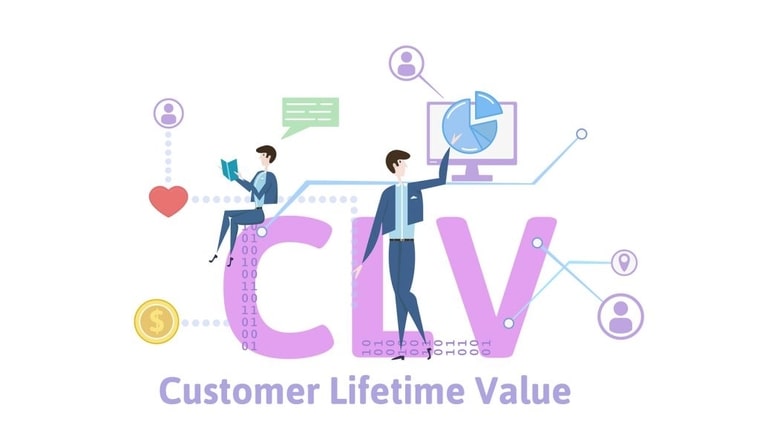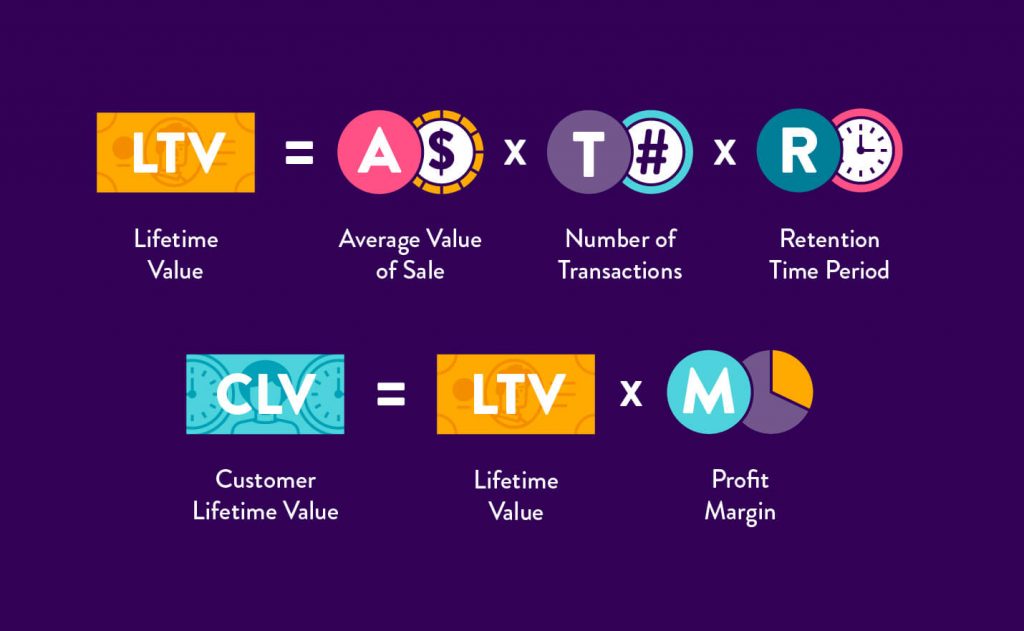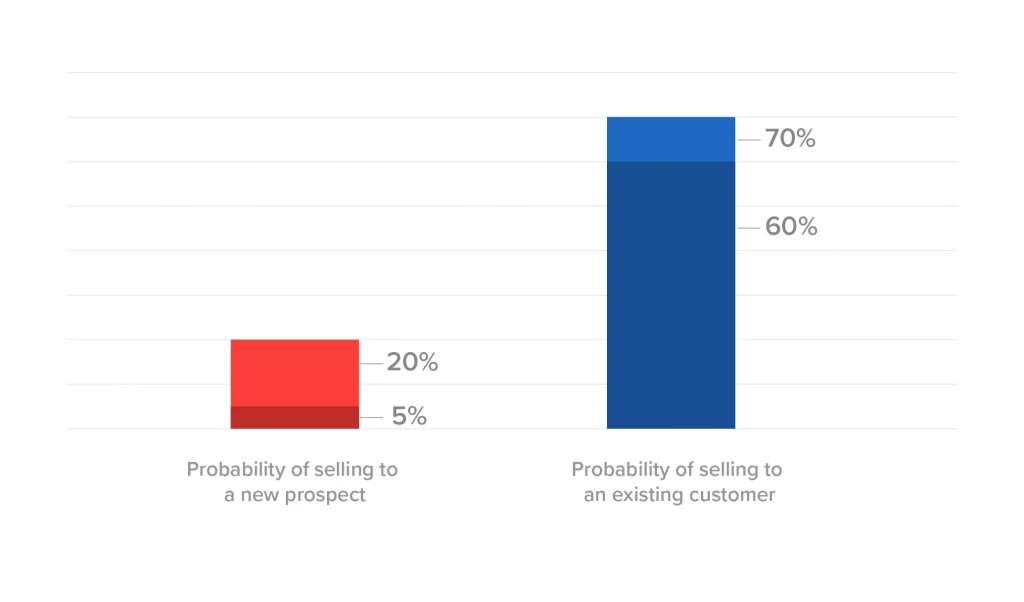User Retention Metrics
If you want to ensure the survival of your business, you must make sure that your business is growing. In today’s constantly developing and growing marketplace, it is almost impossible for a business to maintain its place in the market. But while keeping your business growing, you must ensure that growth is sustainable and secure to minimize risks. So what is the most reliable way to grow your business? Although the first answer that comes to mind is to add new members to your customer portfolio, keeping the customers you already have is just as important as acquiring new customers.
According to a Harvard Business Review article, increasing client retention rates by 5% can boost profits by 25% to 90%. US companies lose $136.8 billion a year due to preventable consumer switching. Given this data, it’s clear that we need to play the customer retention game well to ensure that all the effort and money we spend on acquiring new customers is not wasted, and in order to achieve reliable company growth. In this article, I’ll talk about user retention metrics that you can use to spice up your game.
What is a good customer retention rate?
In an ideal world, there would be no loss of customers. But the world is not a machine that grants wishes. It is unavoidable for businesses to lose customers. Even though you won’t be able to entirely eliminate it, your goal should always be to keep the retention rate as high as possible. Because a low retention rate means that your customers are not satisfied with your business and if this problem is not detected and resolved on time, your business risks being removed from the market. In short, there is no universally accepted definition of a “good customer retention rate.” Ratios as close to 100 percent as possible can be termed ‘good’. Check out our blog for more details about key customer retention metrics and how to analyze them.
Churn Rate
In its simplest definition, the consumer churn rate is a metric that illustrates the rate of consumers a company loses in a given period of time. This loss of customers can take various forms, including not renewing expiring contracts, switching to another company, or cancelling existing subscriptions. Here are a few reasons why users churn:
- Bad user experience: App crashes or slow loading times
- Lack of innovation: Lagging behind new and exciting products on the market
- Bad marketing: Attracting the wrong customers as a result of wrong customer-focused marketing policies. It is perfectly normal for customers who cannot find what they are looking for to stop using your product as soon as they realize this situation.
The most basic formula to calculate the churn rate is:
(number of churns during a certain period) : (number of customers at the beginning of that period) x 100 = churn rate %
To achieve significant growth, a company’s acquisition rate must exceed its loss rate. So, keeping the customer churn rate as low as possible is one of the biggest favours you can do for your business. Here are a few tips to help you keep your client churn rate under control:
- Enhance customer service.
Customer service is a deal-breaker when it comes to building customer loyalty and, as a result, reducing customer churn. Make sure your clients’ representatives can be reached quickly and easily. Improve the assistance process by training your customer service representatives. - Promote longer-term contracts
Encourage your customers to purchase long-term subscriptions through various discounts and promotions. Longer-term contracts ensure that customers get used to your product better, making them more likely to start getting enough value out of the product and stick around. A higher number of annual subscribers usually means a lower annual churn rate. - Concentrate on your competitive advantages
Analyse your competitive advantages with competing products in the market, and inform your customers about this, avoiding being smug. If people know right from the start why your product is the best, they are much less likely to lose interest once they become customers. Show your customers why your product is better than others.
Pro Tip
You can improve your business by churn surveys which you can create for free on HockeyStack.
MRR Growth Rate
The amount of money received from month-to-month income streams such as subscriptions is known as monthly recurring revenue (MRR). Monthly Recurring Revenue (MRR) Growth Rate is a term used to express increases or decreases in monthly changes in MRR. For example, a recurring revenue business increased its MRR from $180K at the beginning of the month to $189K at the end of the month.
(Total MRR end of period – Total MRR beginning of period) / (Total MRR beginning of period)
Net MRR Growth = MRR at the end of the period – MRR at the beginning of the period = $9K
$9K / $180K = 5% MRR Growth Rate per month
Why does it matter?
Knowing the MRR growth rate doesn’t just tell you how much money you make each month and how much you increase that income. Having this basic knowledge also allows you to make many predictions. Knowing how much you earn and how much you will earn in estimates will make your spending more realistic and useful. Paying attention to your customer retention rates is one of the most important steps you can take to boost your MRR growth rate.
What affects the MRR Growth Rate
The increase in monthly recurring revenue is not just due to onboarding new customers. At the same time, reducing customer churn boosts monthly recurring revenue and, as a result, MRR growth. In other words, keeping your current customers is just as important as getting new ones for your business. Furthermore, if your customers keep buying from you, this indicates that they are satisfied with the services provided. A satisfied customer is also capable of making a stronger impact than the largest advertising campaign. They enable your business to gain new customers by sharing the satisfactory service they receive with others. So, the key to attracting new customers to your business is to retain your existing customers.
Retention Rate
While it is exciting to acquire new customers, it is always more profitable to sell to existing customers. Therefore, it is extremely important to know how many of your customers are newcomers and how many are recurring. The retention rate, which can be expressed as a measure of customer loyalty over a certain period of time, is also an indicator of your business’s ability to retain customers.
Customer retention is more than just keeping track of how well your marketing and sales strategies are working. When you monitor your retention rate, you can identify if you need to make significant changes in order to meet your sales and growth goals. The concept is simple: the higher the retention rate, the higher the customer loyalty, and therefore the higher the profit that will come from these customers. Considering that users continue to use applications that they like and that solve their problems, a low retention rate indicates that you should review the solution or service you offer.
Understand why existing customers are leaving in the first place to enhance your business’s customer retention rate. You can send an e-mail to customers who want to cancel their subscriptions, asking why they want to do so, or you can use various surveys to track customer satisfaction. Another way is to reward your most profitable customers. These are customers you don’t want to lose. With the referral programs you will create, you can enable your most profitable and loyal customers to add new customers to your business, and in return, you can reward your loyal customers in various ways. As a result of this method, which benefits both sides, your business’s traffic will increase.
Customer Lifetime Value

Customer Lifetime Value (CLV) is an estimate of the value your relationship with a customer can bring to your business. This approach allows organizations to demonstrate the future revenue they can generate from their marketing initiatives. The longer a business can retain a customer, the higher the customer lifetime value.
Customer lifetime value can be an important assessment tool that can help businesses make decisions about sales and marketing strategies, customer service and support, product development, and other key business processes.
Knowing the Customer Lifetime Value gives you new possibilities to strategize your business for the future. It gives you clear information about where you went wrong and what you did well when developing your business strategy. Increasing the customer lifetime value is crucial for your business to achieve reliable and sustainable growth. In this way, you can improve your relationship with your customers and minimize churns.
Calculating the Customer Lifetime Value gives you the following benefits and more:
- Determining which of your customers is the most profitable for your company.
- Determining how much you will spend to acquire new customers.
- Make predictions about your company’s profit and loss situation in the future.
To calculate the Customer Lifetime Value, we need to identify some concepts:
Average purchase value: total revenue / the number of purchases
Average purchase frequency rate: number of purchases / the number of unique customers who made purchases
Customer value: Average purchase value X average purchase frequency rate.
Average customer lifespan: Sum of customer lifespans/number of customers
Customer lifetime value = Customer value X Average customer lifespan.
This formula gives you an approximation of how much revenue your average customer is expected to generate over the course of their relationship with your company.

LTV
LTV is one of the most important recurring revenue analytics. It is a more general metric than LTV customer lifetime value, which expresses the value of an average customer, unlike the customer lifetime value, which is calculated for each customer separately. You can calculate LTV simply by dividing ARPU by Consumer Churn.
ARPU
Average Revenue Per User (ARPU) is a revenue metric that helps you measure the average monthly revenue that your existing user base pays you. It is a term used to define how successfully a company is maximizing the revenue potential of its clients. It’s an excellent statistic for estimating how much money you’ll make in the coming month or year. It also gives you an idea and a sense of the price you’re charging.
It’s computed by dividing total income for a month by the number of users (if you are a subscription type or software type business) or total revenue for a month by the number of products (if you are a product type business).
It is very important for a business to determine how much revenue the company generates per user. Knowing the average revenue per user can give you many advantages for your business. An increasing ARPU is a sign that your company is able to monetize its user base, which in turn leads to more profits. It helps you to identify current consumption and payment trends in your subscriber base. It allows you to determine which payment prices are popular among your subscriber base, thereby determining whether your pricing plan is viable for your market.

Tips to optimize your ARPU
One of the best pieces of advice that can be given to boost the average revenue per user is to maintain a reasonable price point. You will lose consumers if you have aggressive pricing strategies that are higher than what your client portfolio is prepared to spend. A plan to insinuate more features into your service to raise the price of your service typically backfires with clients.
However, this does not exclude you from improving your product and service and adding anything to it in response to your consumers’ requests and needs. To improve usability and reliability, you should regularly update your service. It will be totally natural for you to increase the amount you charge as long as you continue to add new features to your business.
Focus on up-sell (to sell more of the same product to the current customer) and cross-sell (to sell a different product to the existing customer). As I mentioned above, it is much more profitable and easier to increase the efficiency and profit obtained from your existing customers than to gain the same profit from new customers. You can also increase the customer lifetime value by doing this. Why not? Kill two birds with one stone.
ACV
The average amount of money a company will earn per unit over the course of a year is known as the annual contract value (ACV). So, in a nutshell, it displays the average annual value of contracts signed. The annual contract value is extremely important since it has a big impact on recruiting new customers, which is crucial for your subscription-based business’s growth. Calculating annual contract value enables you to get closer to identifying the real value of each customer for your business when you have distinct customer groups with varied pricing options. I
How to calculate ACV
It’s worth noting that there’s no single, globally acknowledged method for estimating the annual contract value. Whether or not various inputs can be used in the calculation is determined by the companies’ choices. However, it can be said that the following formula is sufficient in general terms:
ACV = Total Contract Value/Total Years in Contract.
How to increase your ACV
Increasing your subscription price may be the most direct and quickest approach to improving your annual contract value. The most important thing to remember here is to boost your wages in a way that does not disrupt clients or cause reactions. Customers who are satisfied with the services provided may be prepared to pay a bit extra, but no one wants to pay twice as much as yesterday for the same service. You can add small innovations to your service to minimize the reactions that may be caused by the increased fee. Another important point to remember is to keep your customers informed about price increases in your subscriptions in a variety of ways. We don’t want them to feel taken advantage of.
Conclusion
Understanding your customers is essential to growing your business and increasing your revenue. Otherwise, you may lose loyal and recurring customers, the essential elements for safe and sustainable growth. If you can’t keep the customers you have gained with a lot of effort and expense, the survival of your business is out of the question. Since recurring customers are key to repeating behaviour and purchasing patterns, understanding and analyzing these patterns is one of the most important ways to grow a business. Understanding customer retention metrics and learning how to analyze them is essential to take your business one step further. Using these metrics, you can examine how well your business is doing and detect potential problems before it’s too late.
FAQ
Customer retention is critical to your company’s sustainability. It is considerably easier and less expensive to increase the loyalty of your existing customers to your business and services than it is to acquire new customers. The company’s future and expansion are in peril if a devoted customer base is not established.
Customer Retention Rate= [(Number of customers at the end of the period measured-Number of new customers during the period) X Number of customers at the first time] X 100
Most fundamentally, what affects customer retention is whether your customers are satisfied with your service and whether they can meet your service. In other words, customer experience is the most important factor that determines retention. Customer service and creative content created to improve this experience also affect retention.





